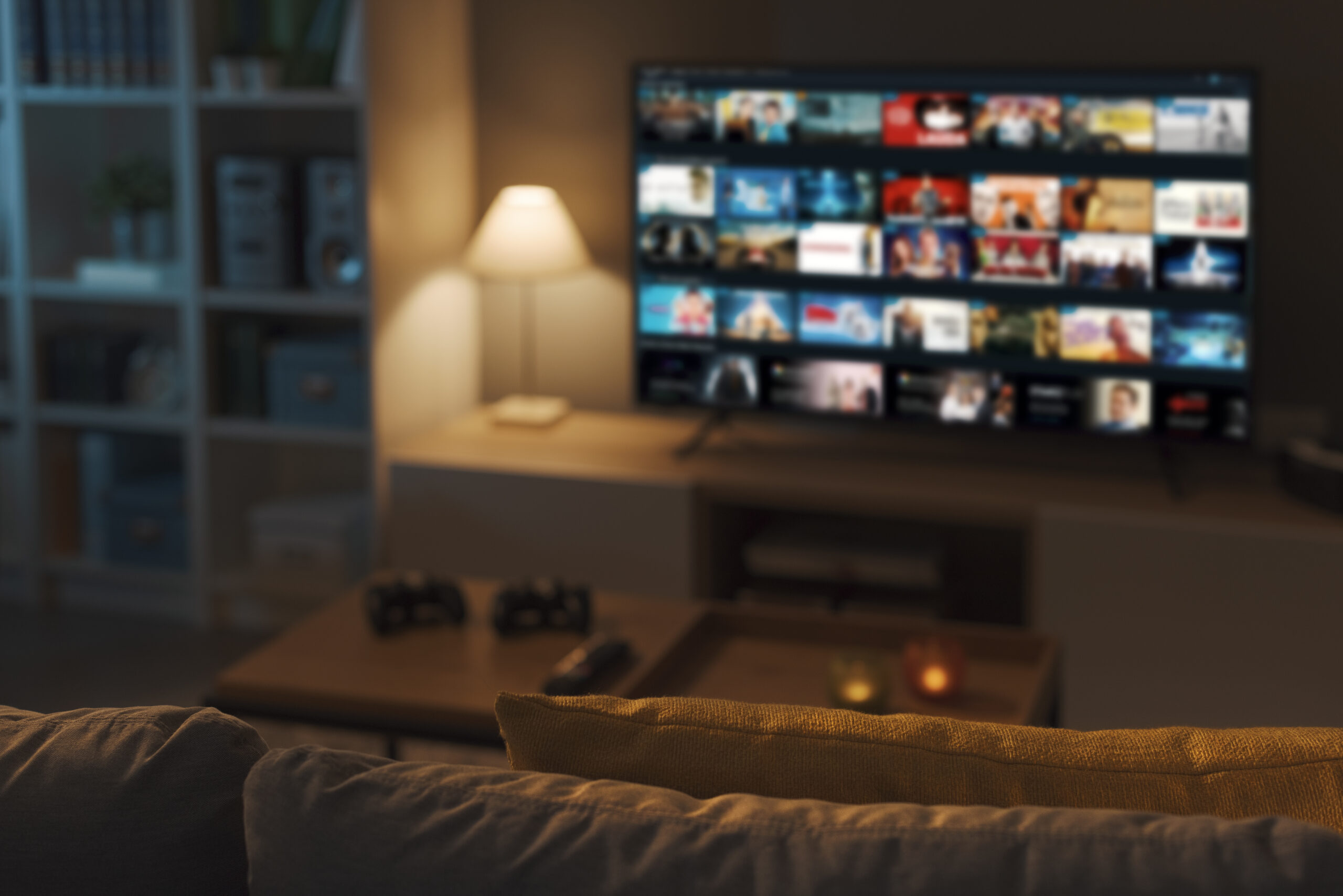One of the biggest challenges of using your TV as a desktop monitor is that it can be hard on your eyes. TVs are designed to be viewed from a distance, and when you use them as a desktop monitor, you’re sitting much closer to the screen. This can cause eye strain, headaches, and even vision problems.
TVs are also not as good as desktop monitors for color accuracy. This can make it difficult to do work that requires accurate color reproduction, such as photo editing or graphic design. If you’re using your TV as a desktop monitor, it’s important to calibrate your display to make sure that the colors are as accurate as possible.

Best Practices For Optimizing Your TV As A Desktop Monitor: A Comprehensive Guide
There are a few things you can do to optimize your TV for use as a desktop monitor. First, make sure that your TV is at the correct height and distance from your eyes. The top of the screen should be at or slightly below eye level, and you should be sitting about an arm’s length away from the screen. Second, adjust the brightness and contrast settings on your TV to make sure that the image is clear and easy to see. You may also want to enable any eye-care features that your TV has, such as blue light reduction.

Third, use a dedicated sound system for your TV. The speakers on most TVs are not very good, and using external speakers will improve your sound quality and make it easier to hear what’s going on. Finally, if you’re going to be using your TV as a desktop monitor for extended periods of time, consider investing in a pair of blue light glasses. These glasses will help to reduce eye strain and fatigue.
Best Practices For Optimizing Your TV As A Desktop Monitor: A Comprehensive Guide
Using your TV as a desktop monitor can be a great way to save space and money, especially if you don’t have a lot of room for a dedicated desktop monitor. However, it’s important to take some steps to optimize your TV for use as a desktop monitor. This will help to reduce eye strain and fatigue, and improve your overall experience.

Best Practices For Optimizing Your TV As A Desktop Monitor: A Comprehensive Guide
One of the biggest misconceptions about using a TV as a desktop monitor is that it’s not as good as using a dedicated monitor. And it’s about time to debunk that issue. TVs have come a long way in recent years, and many of them now offer excellent picture quality and features that are comparable to those found on dedicated monitors. However, there are still some important differences between TVs and monitors that you should be aware of before you make a decision about which type of display is right for you.

Best Practices For Optimizing Your TV As A Desktop Monitor: A Comprehensive Guide
One of the main differences between TVs and monitors is the refresh rate. Refresh rate refers to the number of times per second that the screen is updated. A higher refresh rate results in a smoother, more fluid image. Most TVs have a refresh rate of 60Hz, while gaming monitors typically have a refresh rate of 120Hz or higher. A higher refresh rate can be beneficial for gaming, as it can reduce motion blur and make the game feel more immersive.
Another difference between TVs and monitors is the response time. Response time refers to the amount of time it takes for a pixel to change color. A lower response time results in a sharper, more responsive image. Most TVs have a response time of 5ms or higher, while gaming monitors typically have a response time of 1ms or less. A lower response time can be beneficial for gaming, especially for fast-paced games where quick reflexes are essential.
Best Practices For Optimizing Your TV As A Desktop Monitor: A Comprehensive Guide
Which is better: a TV or a dedicated monitor? It really depends on your individual needs and preferences. If you’re looking for the best possible gaming experience, then a dedicated gaming monitor is the way to go. However, if you’re on a budget or you don’t need the absolute best performance, then using your TV as a desktop monitor is a great option.

Best Practices For Optimizing Your TV As A Desktop Monitor: A Comprehensive Guide
Here are a few tips for optimizing your TV as a desktop monitor:
1. Make sure that your TV is at the correct height and distance from your eyes. The top of the screen should be at or slightly below eye level, and you should be sitting about an arm’s length away from the screen.
2. Adjust the brightness and contrast settings on your TV to make sure that the image is clear and easy to see.
3. Use a dedicated sound system for your TV. The speakers on most TVs are not very good, and using external speakers will improve your sound quality and make it easier to hear what’s going on.
4. If you’re going to be using your TV as a desktop monitor for extended periods of time, consider investing in a pair of blue light glasses. These glasses will help to reduce eye strain and fatigue.

Best Practices For Optimizing Your TV As A Desktop Monitor: A Comprehensive Guide
One of the biggest benefits of using a TV as a desktop monitor is that it can save you money. TVs are often less expensive than dedicated monitors, especially if you’re looking for a large display. For example, you can get a 40-inch TV for around $300, while a 40-inch dedicated monitor will cost you around $500 or more.
Another benefit of using a TV as a desktop monitor is that it can be more versatile. TVs can be used for a variety of purposes, such as watching TV, playing games, and browsing the web. Dedicated monitors, on the other hand, are typically designed for a specific purpose, such as gaming or photo editing.
Questions and Answers
1. What are the benefits of using a TV as a desktop monitor?
There are several benefits to using a TV as a desktop monitor, including:
2. What are the drawbacks of using a TV as a desktop monitor?
There are also some drawbacks to using a TV as a desktop monitor, including:
3. How can I optimize my TV for use as a desktop monitor?
There are a few things you can do to optimize your TV for use as a desktop monitor, including:
4. What are some alternatives to using a TV as a desktop monitor?
If you’re not sure whether using a TV as a desktop monitor is right for you, there are a few other options to consider:
Conclusion of Best Practices For Optimizing Your TV As A Desktop Monitor: A Comprehensive Guide
Using your TV as a desktop monitor can be a great way to save money and space. However, it’s important to be aware of the potential drawbacks and to take steps to optimize your TV for use as a desktop monitor. By following the tips in this guide, you can enjoy the benefits of using a TV